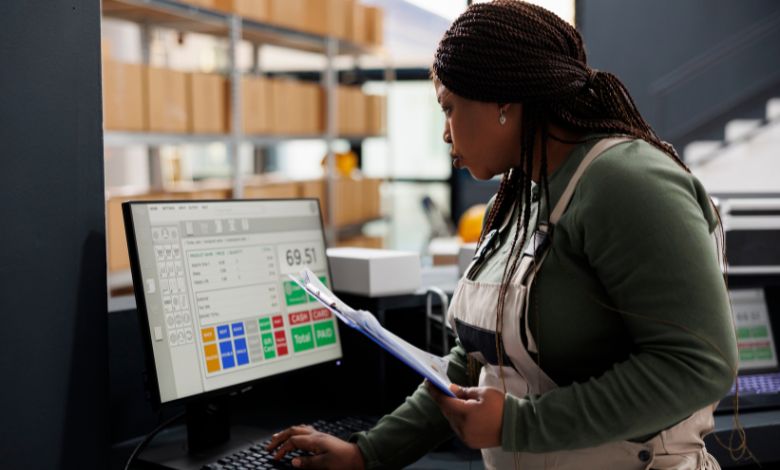Learn how to disassemble KV-27S42 safely with step-by-step instructions, safety tips, and ideas to repurpose salvaged parts.
Disassembling a CRT (Cathode Ray Tube) television like the Sony KV-27S42 is no small feat. If you’re here, chances are you’ve either got an old TV taking up space in your garage, you’re a DIY enthusiast looking to salvage parts, or you’re someone who just doesn’t want to toss a bulky piece of vintage tech into a landfill. Whatever your reason, you’ve come to the right place.
I’ve been working with electronics for years, and I still remember the first time I cracked open a CRT TV. I was sweating bullets because of all the horror stories about high-voltage shocks and fragile glass tubes. But once I got the hang of it, I realized it wasn’t just about taking something apart, it was about understanding how this now-antique technology worked, finding ways to repurpose its components, and doing it all safely. In fact, managing the components from these old TVs reminded me of tackling inventory management challenges, keeping track of salvaged parts, deciding what to repurpose, and ensuring nothing hazardous was mishandled.
In this guide, I’ll take you step by step through disassembling your Sony KV-27S42, highlight safety tips that can’t be ignored, and share some creative ways to make use of the parts you salvage. Let’s dive in.
Article Breakdown
Why Disassembling the KV-27S42 is Worth Your Time
Before we get into the nuts and bolts, let’s talk about why this process matters. The KV-27S42 is a classic piece of technology. Manufactured by Sony as part of their Trinitron line, this CRT TV stands out for its durability, picture quality (for its time), and sheer size. However, like all CRT TVs, it’s a relic of the past.
Here’s why you should consider disassembling it:
- Salvageable Components: CRT TVs are packed with parts like flyback transformers, yoke coils, and capacitors that can be reused in DIY projects or repairs.
- Eco-Friendly Disposal: CRTs contain hazardous materials like lead and phosphor, so they can’t just be tossed in the trash. Disassembling them lets you separate recyclable materials and dispose of toxic components responsibly.
- Learning Opportunity: If you’re into electronics, taking apart a CRT is like stepping into a time capsule of 1990s engineering.
I still have the first yoke coil I salvaged from an old TV. It’s not much, but it reminds me of how far I’ve come in understanding electronics. Now, let’s talk about what you’ll need for this project.
Tools You’ll Need
Disassembling a CRT TV isn’t something you can do with your bare hands (and trust me, you wouldn’t want to). Here’s a list of tools that’ll make the process smoother:
- Phillips and flathead screwdrivers: For removing screws and prying open parts.
- Needle-nose pliers: Helpful for gripping and pulling wires.
- Gloves: Use insulated gloves to protect your hands from sharp edges and potential electrical hazards.
- Safety goggles: CRT glass can shatter, so don’t skip this one.
- Multimeter: To check for any residual charge in the TV’s high-voltage components.
- Discharge tool or resistor: I’ll explain how to discharge the CRT safely in the next section.
- Container or tray: Keep screws and small parts organized.
Safety Warning: Don’t Skip This Section
Let’s get real for a second. CRT TVs are not like modern electronics. They can hold a dangerous charge even if they’ve been unplugged for months. The capacitor inside the CRT can store up to 25,000 volts, enough to seriously injure or even kill you.
Here’s how to stay safe:
- Discharge the CRT: Use a discharge tool or create one by attaching a 1MΩ resistor to an insulated screwdriver. Ground the other end by connecting it to the TV’s chassis with an alligator clip. Carefully insert the screwdriver under the rubber cap (called the anode) on the back of the CRT. You might hear a pop, this is normal.
- Wear Protective Gear: Gloves, goggles, and long sleeves are your best friends.
- Work in a Well-Lit Area: Visibility is key to avoiding mistakes.
- Handle the CRT Tube with Care: It’s made of vacuum-sealed glass and can implode if cracked.
I learned the importance of these precautions the hard way. Early on, I underestimated how fragile the CRT tube was and ended up with glass shards everywhere. Lesson learned. Don’t be me, take your time and prioritize safety.
Step-by-Step Guide to Disassemble the KV-27S42
Now that you’re prepped, let’s get to work. Follow these steps carefully:
Step 1: Remove the Back Panel
Unplug the TV and let it sit for at least 24 hours to reduce the risk of residual charge. Use a Phillips screwdriver to remove all screws from the back panel. Place the screws in your container to keep them organized.
Step 2: Discharge the CRT
As mentioned earlier, use a discharge tool to safely remove any stored voltage. Don’t skip this step, it’s the most critical part of the process.
Step 3: Disconnect Internal Wires
Once the back panel is off, you’ll see a network of wires connected to the power supply board, speakers, and CRT. Use pliers to disconnect the wires, noting where each one was attached for future reference.
Step 4: Remove the Circuit Boards
Carefully unscrew the power supply and signal boards. These boards often contain salvageable components like capacitors and resistors.
Step 5: Detach the CRT
The CRT is the largest and heaviest component. Remove the screws securing it to the chassis, then carefully lift it out. Be mindful of the fragile glass.
Top 5 Salvageable Parts and Their Uses
Disassembling a CRT TV isn’t just about safely taking it apart, it’s also about finding value in its components. Here are the most useful parts you can salvage:
- Flyback Transformer: Perfect for high-voltage projects like Tesla coils or plasma globes.
- Yoke Coils: Great for electromagnetic experiments or DIY motors.
- Speakers: Often reusable in small audio projects.
- Capacitors: Useful for repairing other electronics.
- Chassis and Frame: The metal frame can be repurposed for custom enclosures or art projects.
I once used a yoke coil to build a simple electromagnetic levitation device. It wasn’t perfect, but the thrill of seeing it work was worth every minute spent tinkering.
Safety Tips for Handling CRT TVs
If you take one thing away from this guide, let it be this: Safety first, always. Here are some additional tips to keep in mind:
- Never Touch the Anode Cap Without Discharging It: Even a small residual charge can be dangerous.
- Dispose of Hazardous Materials Responsibly: The CRT glass contains lead, and the phosphor coating can be toxic. Check with your local recycling center for proper disposal guidelines.
- Lift with Care: CRTs are heavy, and improper lifting can cause back injuries.
DIY Projects You Can Create Using CRT Parts
Once you’ve salvaged the components, the possibilities are endless. Here are a few ideas to get you started:
- Custom Retro Arcade Cabinet: Use the CRT screen to build a classic gaming setup.
- Plasma Globe: Harness the flyback transformer to create an eye-catching display.
- Art with CRT Glass: Turn the vacuum-sealed tube into a unique sculpture or lamp.
I’ve seen people turn old CRTs into aquariums or even retro-style clocks. The creativity in the DIY community never ceases to amaze me.
How to Responsibly Recycle Your KV-27S42
If you’re not planning to repurpose the parts, it’s crucial to recycle the TV responsibly. Here’s how:
- Separate Components: Remove recyclable materials like metal and plastic.
- Find a Certified E-Waste Recycler: Many centers specialize in handling CRTs.
- Check Local Regulations: Some areas offer free recycling programs for electronics.
Frequently Asked Questions (FAQ’s)
How dangerous is disassembling a CRT TV?
It’s only dangerous if you don’t follow safety precautions. Always discharge the CRT and wear protective gear.
Can I reuse the CRT tube?
While it’s possible, CRT tubes are fragile and typically not worth reusing unless you’re restoring another TV or creating art.
What should I do if I break the CRT glass?
Ventilate the area, wear gloves, and clean up carefully. Dispose of the glass at a hazardous waste facility.
Key Takings
- Disassembling a Sony KV-27S42 is an opportunity to learn, create, and help the environment.
- Salvage parts for DIY projects or recycle responsibly to reduce waste.
- Approach the process with care and curiosity for the best results.
- The complexity may seem overwhelming at first, but step-by-step understanding makes it manageable.
- Disassembly is not just about breaking down a device, it’s about gaining insight into how it works.
Additional Resources
- Waste Reduction & Recycling Resources: Offers free waste prevention and recycling services for businesses and public agencies.
- Examples and Resources (#1, 50) | US EPA: Provides over 100 examples and resources for achieving zero waste in communities.
- Top 10 Benefits of Hands-On Learning: Why It Works: Highlights the benefits of hands-on learning and offers tips for classroom implementation.



